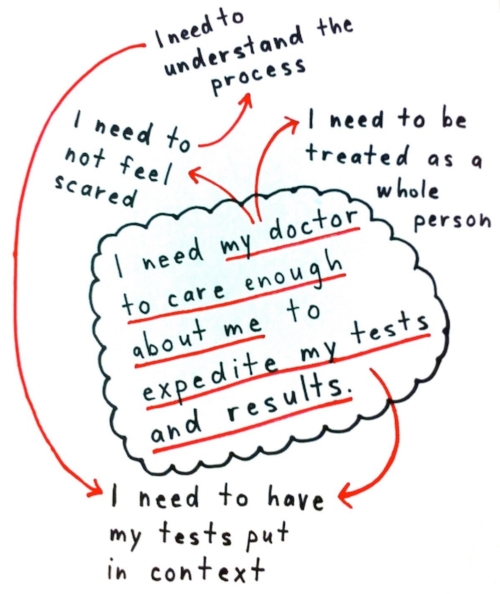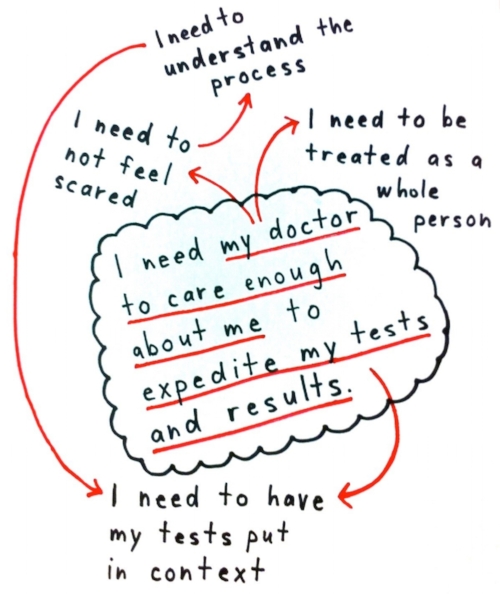What are need statements and why are they valuable?
A need statement is a short and often simple sentence describing what the end-user of a service has identified as a requirement. As part of the design process, needs are developed by analyzing single ideas from often complex user engagement. These single ideas can be combined with others needs to understand the collective end-user experience.
Need statements are valuable because they offer simple direct stories of what people actually need, rather than what they want. By breaking down complex scenarios into simple statements, we can challenge our assumptions and inspire empathy for those we are designing services for.
How do I write needs statements?
Begin by reviewing your engagement material and notes, first looking for explicit needs that have been expressed.
Explicit needs may already be written as “I need…” or “I want…” statements, which are great to pull out of your data from the beginning. Implicit needs can take a bit more work to tease out. Remember to make smart leaps: the key to not to insert yourself or your opinions when finding these implicit needs.

Try to write out as many needs as possible in a simple and direct way. This can often help you uncover needs that are not always visible on the surface. The more need statements you have the more confident you can be that they address a wide range of experiences. We find it easiest to write each individual need on a Sticky Note, so that they are moveable and ready to share.

How do I turn needs statements into themes and insights?
To begin understanding your needs and turning them into themes and insights, you’ll need to start clustering your individual needs statements by similarities. It may seem intuitive to predefine your buckets that you are clustering into but avoid this at all costs. By allowing the themes to emerge on their own, a conversation with the end-users and service providers will emerge naturally.
Once you have created your clusters you’ll need to give them a name. Remember to use clear titles that are descriptive of the content in the clusters. It may seem natural to use metaphors or other jargon-y words but try to resist the temptation! The point of the cluster title is to help anyone who picks up the cluster easily understand its contents.

Depending on the amount of engagement generated, these clusters can become quite large. At Overlap we often clear the boardroom and spread the need statement clusters across the floor. We also frequently cluster the clusters to have higher level insights with layers of needs stacked below.
How do I turn themes and insights into actionable questions or areas for improving my service?
To begin creating actionable questions or areas for improvement we use one simple innovation starter: “How Might We” (HMW). This frames the question as being open-ended one rather than forcing a single answer. We combine the HMW question with a need statement to create a starting point for solutions. Use the following 4 steps to create your HMW question:
- Identify a need, theme or insight that you want to act on
- Decide what you want to do (improve, increase, built-on, decrease, etc.)
- For whom
- Write it into a question that begins with “How Might We” (HMW)

You can view the embedded webinar video below and download the PDF of the slide deck here.
We hope that you are now feeling a bit more confident in the Design Thinking approach to qualitative needs and insights. The easiest way to get confidence in working with needs and insights it to just try it. You can use this method with photocopied empathy maps and postcards you have already collected; saving the originals to be sent to the Health Foundation after Thanksgiving.
It might be fun to have your team each grab and cluster their own needs and insights from the same completed design artifact (empathy map or postcard). See how each of you gather the same or different need statements, ideas and clusters. You may consider having a facilitated discussion about the similarities and differences in your statements and clusters.
To see how needs and insights are used to inform the service design process, please visit designingbetter.ca for examples used during the webinar.



